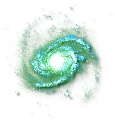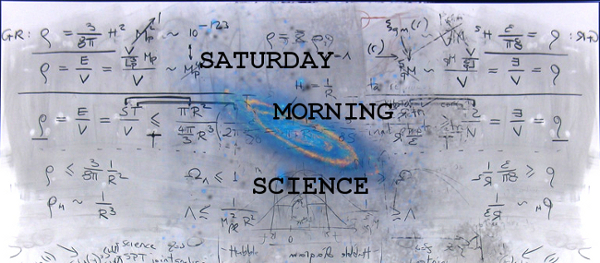Saturday Morning Science 005
This installment has nothing to do with Charlie Sheen. Popular science writing doesn’t need him, it’s got String Theory. This week it’s all about gravity; the weak yet pervasive force that holds everything together and either kick starts grand theories or brings them to a grinding halt. Every toddler becomes a gravity theorist when they first get it into their head to can the crawl and get with this walking thing.
I’ve noticed two distinct styles to this process. Some kids are devout Newtonians. They stand and then tilt themselves in the direction they want to go. They lead with their heads and barrel towards their destination; their feet cycling more to keep them upright than to actually produce thrust. They collide with their destination if they don’t fall first and then pick a new vector zigzagging their way through rooms and halls looking for bank shots with the eye of an apprentice pool shark.
Then there are the “Probabilists “. This school approaches the task more cautiously. They stand. They raise a foot to move while keeping their balance. The foot comes down but before it lands, it circles, hovering over the drop zone. For this toddler, movement is slow but definite. They look indecisive and uncertain but they are always steady and don’t fall as often as their more ballistic colleagues. Their appreciation of uncertainty and change is allowed by their deeply rooted balance.
With adults, theorising about gravity is something they have either stopped doing or made a career of and for those that do there are many theories to defend, argue against, propose and test. And it’s not just physics that has to deal with this 800 lb gorilla. The biologists are showing that our relationship to gravity begins well before we take our first steps.
 MOND vs. Dark Matter-Galaxies do not move the way they are supposed to. The stars distributed through a galaxy should be moving at different speeds; fast near the centre and slow out towards the rim. Instead they move at a more or less uniform speed. Galaxies in clusters exhibit similar discrepancies. Back in 1933, Caltech astrophysicist Fritz Zwicky put forth the proposition that huge unseen amounts of “dark matter” were exerting gravitational effects on the parts of the universe that we can see. The idea lay fallow until the late 1960’s when improved techniques for spectrography were applied to observations of spiral galaxies and then the wide spread and consistent nature of this problem became too large to ignore. Dark Matter with its counterpart Dark Energy went big; over ninety-five percent of the estimated mass of the total universe “big”. For an entity of this size and theoretical importance to exist largely based on inference and without direct observation is either a triumph of deduction or maybe just the imagination. Dark Matter’s greatest hit might well be the three dimensional map that astronomers pieced together using data from the Hubble telescope based on the gravitational lensing effects on the light from millions of galaxies. Theoretically necessary and metaphorically appealing Dark Matter fills the void with something other than empty space and data that doesn’t make sense; everyone should be happy.
MOND vs. Dark Matter-Galaxies do not move the way they are supposed to. The stars distributed through a galaxy should be moving at different speeds; fast near the centre and slow out towards the rim. Instead they move at a more or less uniform speed. Galaxies in clusters exhibit similar discrepancies. Back in 1933, Caltech astrophysicist Fritz Zwicky put forth the proposition that huge unseen amounts of “dark matter” were exerting gravitational effects on the parts of the universe that we can see. The idea lay fallow until the late 1960’s when improved techniques for spectrography were applied to observations of spiral galaxies and then the wide spread and consistent nature of this problem became too large to ignore. Dark Matter with its counterpart Dark Energy went big; over ninety-five percent of the estimated mass of the total universe “big”. For an entity of this size and theoretical importance to exist largely based on inference and without direct observation is either a triumph of deduction or maybe just the imagination. Dark Matter’s greatest hit might well be the three dimensional map that astronomers pieced together using data from the Hubble telescope based on the gravitational lensing effects on the light from millions of galaxies. Theoretically necessary and metaphorically appealing Dark Matter fills the void with something other than empty space and data that doesn’t make sense; everyone should be happy.
A study of “gas rich” galaxies by University of Maryland Astronomy Professor Stacy McGaugh has proposed that maybe the Dark Matter theory can be challenged by applying MOND to the problem. MOND stands for “Modified Newtonian Dynamics” and was proposed by Mordehai Milgrom in 1983 to deal with the same problems in galactic movement. He proposed an amendment to Newton’s laws of gravity, namely that at extremely low accelerations force is not linearly proportional. A small difference that becomes huge when you are looking at galaxies and galactic clusters. McGaugh’s results with the MOND approach are impressive in that his predictions on the orbital movement inside the galaxies he’s studied, appear to be far more accurate than anything that can be done by evoking Dark Matter. Is this the beginning of the end for Dark Matter? Hardly, ninety-five percent of the universe can’t just disappear. Can it? For a thoughtful overview of the problem check out this article from Scientific American.
 Black Hole Fun- Superconductivity appears in metals at extremely low temperatures and in graphene and its competitors at room temperature but in the case of the conditions surrounding black holes superconductivity can occur in insulators. The Science Daily article, Black Holes: A Model for Superconductors? is worth a look not because singularity powered laptops are going to be the next big thing but because the theoretical ground for this research comes from string theory. Yes, I feel that I have to make up for those unkind and thoughtless remarks that I made at the top of today’s column. They were cheap and unfair. To all String Theorists and their many fans I just want to say that I’m happy to share in any universe where String Theory is a theory. Honest.
Black Hole Fun- Superconductivity appears in metals at extremely low temperatures and in graphene and its competitors at room temperature but in the case of the conditions surrounding black holes superconductivity can occur in insulators. The Science Daily article, Black Holes: A Model for Superconductors? is worth a look not because singularity powered laptops are going to be the next big thing but because the theoretical ground for this research comes from string theory. Yes, I feel that I have to make up for those unkind and thoughtless remarks that I made at the top of today’s column. They were cheap and unfair. To all String Theorists and their many fans I just want to say that I’m happy to share in any universe where String Theory is a theory. Honest.
.
 Tides and Life-With the media looking for “New Earths” at a rate faster than astronomers kind find them it’s good to see someone sit down and itemise just what is wrong with a lot of the planets found in that very broadly defined “Habitable Zone”. A team of astronomers led by René Heller of the Astrophysical Institute Potsdam have done this and their list of what goes wrong with planets circling low mass stars makes for a good counter balance to next Earth 2 claim that makes the headlines. Check it out at Science Daily.
Tides and Life-With the media looking for “New Earths” at a rate faster than astronomers kind find them it’s good to see someone sit down and itemise just what is wrong with a lot of the planets found in that very broadly defined “Habitable Zone”. A team of astronomers led by René Heller of the Astrophysical Institute Potsdam have done this and their list of what goes wrong with planets circling low mass stars makes for a good counter balance to next Earth 2 claim that makes the headlines. Check it out at Science Daily.
 Gravity and Life– Some of the research in this next section is going to be a genuine downer. For some the future is intimately and inevitably about humanity heading off into space, colonising the nearer planets and moons and then moving out into the Galaxy. This idea has taken a possibly fatal hit. The research isn’t all that new but I’ve been watching to see how much commentary it generated and if it would have any bearing on public statements about manned space exploration. For the most part, it hasn’t.
Gravity and Life– Some of the research in this next section is going to be a genuine downer. For some the future is intimately and inevitably about humanity heading off into space, colonising the nearer planets and moons and then moving out into the Galaxy. This idea has taken a possibly fatal hit. The research isn’t all that new but I’ve been watching to see how much commentary it generated and if it would have any bearing on public statements about manned space exploration. For the most part, it hasn’t.
The long term effects of low to near zero gravity on the human body have been studied both on the Mir and International space stations. Bone calcium and muscle loss have been documented and some of the effects compensated for. Research, funded by NASA and carried out by teams at the University of New South Wales in Australia, into the growth of stem cells in micro-gravity has come back with very negative results. Essentially, stem cells do not reproduce normally in low gravity conditions. This goes along way towards explaining many of the effects of low gravity on the body but it also raises a more daunting possibility. The idea of multi-generational colonies on the Moon or Mars, of humans starting new civilisations beyond the Earth may have gone from a concept to something less than a dream. Embryonic development needs gravity to orient its path. How little gravity remains to be seen and maybe there’s some escape clause to this situation but for now the research looks fairly daunting. For a better look at this checkout these articles at Popular Science , SciTechStory and space.com.





145851 270247You created some respectable points there. I looked on the internet for the problem and located a lot of people will go along with along with your internet site. 229033
552736 707408 You should take part in a contest for among the greatest blogs on the internet. I will recommend this website! 883534